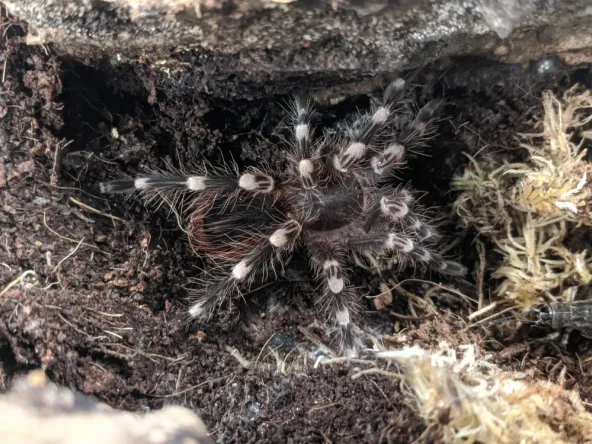Why Is My Tarantula Not Eating?
Owning a tarantula can be a rewarding experience, but it also comes with responsibilities. One of the most common concerns among tarantula owners is when their pet stops eating. Several factors can contribute to a tarantula’s refusal to eat, ranging from simple environmental adjustments to more serious health issues. Understanding these reasons is crucial for ensuring your tarantula’s well-being. This guide will explore the various causes behind a tarantula’s loss of appetite and provide practical advice on how to address the situation. Addressing this requires careful observation and a proactive approach to pet care. The goal is to identify the underlying cause and implement the appropriate measures to restore your tarantula’s health and feeding habits. Proper care and attention to detail are vital for the longevity and happiness of your eight-legged friend.
Stress and Environmental Factors
Tarantulas are sensitive creatures that can be easily stressed by changes in their environment. Stress can manifest in various ways, including a loss of appetite. Temperature and humidity are critical factors. If the enclosure is too cold, the tarantula’s metabolism slows down, reducing its need for food. Similarly, extremely high or low humidity levels can cause stress and dehydration, impacting their willingness to eat. Other environmental stressors include excessive handling, vibrations, loud noises, and the presence of other disturbing elements. To mitigate stress, maintain a stable and appropriate habitat. Make sure the enclosure is placed in a quiet location away from direct sunlight and drafts. Avoid excessive handling, especially during the molting phase, and always provide a secure and comfortable environment to promote healthy feeding habits.
Temperature and Humidity

Proper temperature and humidity are crucial for a tarantula’s health and feeding behavior. Most tarantula species thrive in temperatures between 75-85°F (24-29°C). Use a reliable thermometer to monitor the temperature within the enclosure. Humidity levels also vary depending on the species but generally range from 60-80%. Use a hygrometer to measure humidity and mist the enclosure with dechlorinated water as needed. Improper temperature and humidity levels can cause the tarantula to become lethargic and lose its appetite, so regular monitoring and adjustments are essential. A well-regulated environment is key to encouraging your tarantula to feed and thrive.
Molting Cycle and Its Impact
Molting is a natural process where tarantulas shed their exoskeletons to grow. During this period, they typically stop eating. The molting cycle can significantly impact their feeding habits. Understanding the different phases can help you avoid unnecessary worry. The molting cycle is often preceded by specific behaviors and physiological changes. Recognizing these signs allows you to adjust your care accordingly. Be patient and avoid disturbing your tarantula during this vulnerable time. The molting process is a sign of a healthy tarantula growing and developing properly. Observing the changes can help you better understand the needs of your pet and ensures you are providing the best possible care.
Pre-Molting Symptoms
Before molting, tarantulas often exhibit specific behaviors. They might become less active, spend more time in their hide, or refuse food. The abdomen may darken, and the exoskeleton might appear dull. They may also start constructing a web mat in preparation for molting. These signs can last from a few days to several weeks, depending on the tarantula’s age and species. Recognizing pre-molting signs allows you to prepare accordingly. Refrain from feeding your tarantula during this period, as it is likely the prey will not be consumed. Make sure that the humidity levels are adequate to ease the process, and avoid disturbing the tarantula. Being aware of these signs will help you support your pet through this crucial stage of its life.
Post-Molting Hunger
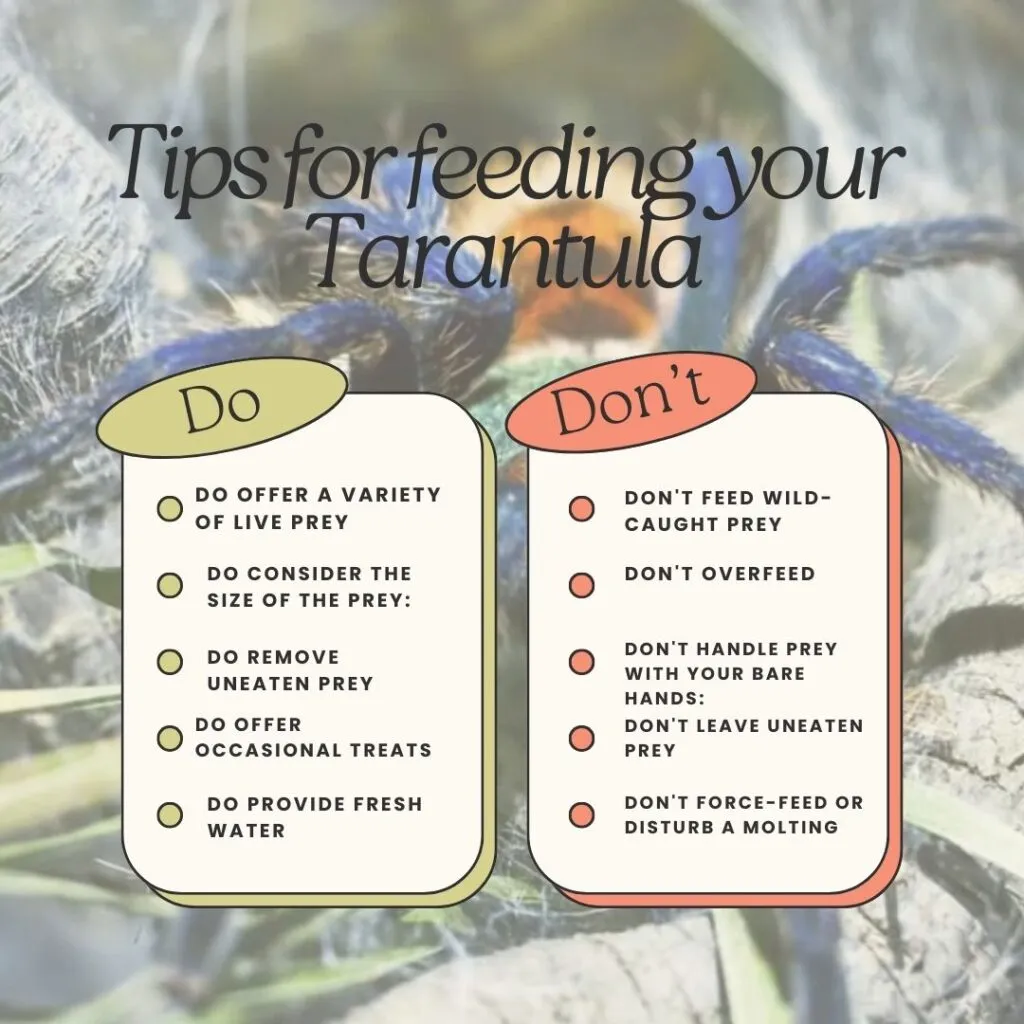
After molting, tarantulas are typically very hungry. Their new exoskeleton is soft, so it’s essential to wait a few days to allow it to harden before offering food. Once the exoskeleton has fully hardened, you can resume feeding. Start with smaller prey items initially, as their chelicerae (mouthparts) might still be tender. Ensure the prey is appropriate for the size of your tarantula. Provide a varied diet to give the tarantula the nutrients it needs to replenish its energy reserves. Regular feeding helps maintain the tarantula’s health and supports the next molt. Observing your tarantula’s feeding response after molting is a good indicator of its recovery. It is also a sign that it’s healthy and ready to continue its life cycle.
Common Diseases and Illnesses
Like any animal, tarantulas can suffer from diseases and illnesses that affect their appetite. While tarantulas are generally hardy, they are still susceptible to various health issues. Recognizing the symptoms of these ailments is essential for early intervention. Parasites, bacterial infections, and fungal diseases can all lead to a loss of appetite and other concerning symptoms. If you suspect your tarantula is ill, it is important to seek veterinary advice promptly. Proper care and an understanding of potential health problems are crucial for the well-being of your pet. Early detection and appropriate treatment significantly improve the chances of a full recovery. Proper hygiene and environmental management can go a long way in preventing illnesses and ensuring that your tarantula remains healthy and eats regularly.
Parasites
Tarantulas can be affected by parasites, such as mites and nematodes, which can cause a range of health problems, including loss of appetite. Mites are small, often red or brown, and can be visible on the tarantula’s body. Nematodes are tiny worms that can infest the digestive tract. These parasites can weaken the tarantula and make it difficult for them to feed. Regular inspection of your tarantula and its enclosure is essential. If you notice signs of parasites, consult with a veterinarian or an experienced arachnid keeper for treatment options. Maintaining a clean habitat and quarantining new tarantulas can help prevent infestations. Early detection and treatment are crucial for managing parasitic infections and maintaining your tarantula’s health.
Age-Related Feeding Changes
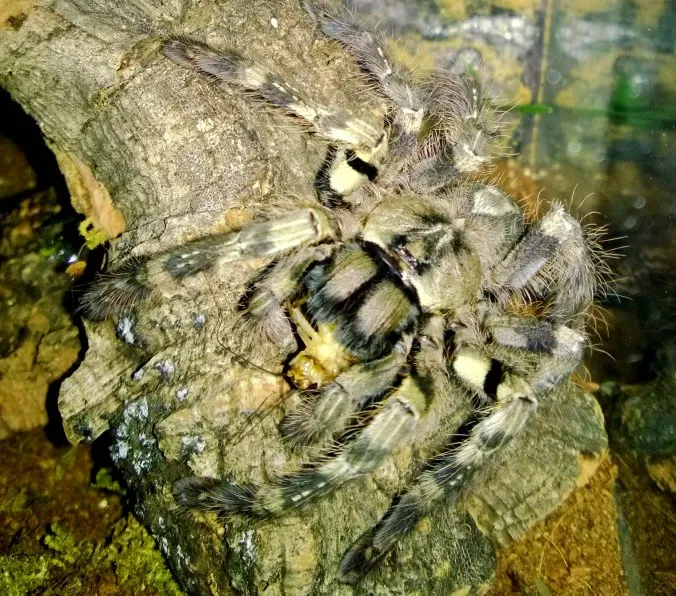
As tarantulas age, their nutritional needs and feeding habits change. Older tarantulas often have a slower metabolism, which reduces their need for food. Understanding these age-related changes is critical for providing appropriate care. The feeding frequency and the types of prey offered should be adjusted to suit the tarantula’s life stage. Regular observation is crucial for monitoring your tarantula’s health and ensuring it receives the proper nutrition. Aging tarantulas are less active and require less energy than younger ones. Providing a well-balanced diet that caters to their evolving needs is essential for their longevity. Adapting your feeding routine and providing optimal care ensures they remain healthy and comfortable throughout their lives.
Dietary Adjustments for Older Tarantulas
Older tarantulas may need fewer feedings compared to younger ones. Reduce the frequency of feeding, perhaps to once every two to four weeks, depending on the species and the individual tarantula’s needs. Offer smaller prey items, such as smaller crickets or mealworms, to prevent overfeeding and reduce stress. Ensure the prey is easily accessible to the tarantula. Monitor the tarantula’s body condition; a slightly plump abdomen is normal, but excessive weight gain can be a sign of overfeeding. Providing a suitable diet supports the older tarantula’s overall health. It allows them to continue enjoying a good quality of life throughout their later years. Remember, each tarantula is unique, so always observe its behavior. Adjust the feeding plan as necessary to maintain a healthy and happy pet.
Top 5 Signs of a Starving Tarantula
Recognizing the signs of a starving tarantula is crucial for timely intervention. Several indicators can help you identify if your pet is not getting adequate nutrition. Being able to spot these signs allows you to assess the situation and take appropriate action. Pay close attention to your tarantula’s behavior, appearance, and feeding habits. If you observe any of the following symptoms, it may be time to adjust the care routine or seek advice from a veterinarian or experienced tarantula keeper. Early detection and proper care are vital for a tarantula’s health, so be vigilant and proactive to ensure their well-being. These signs can help you provide better care, ensuring that your tarantula is eating properly.
Lethargy and Weakness
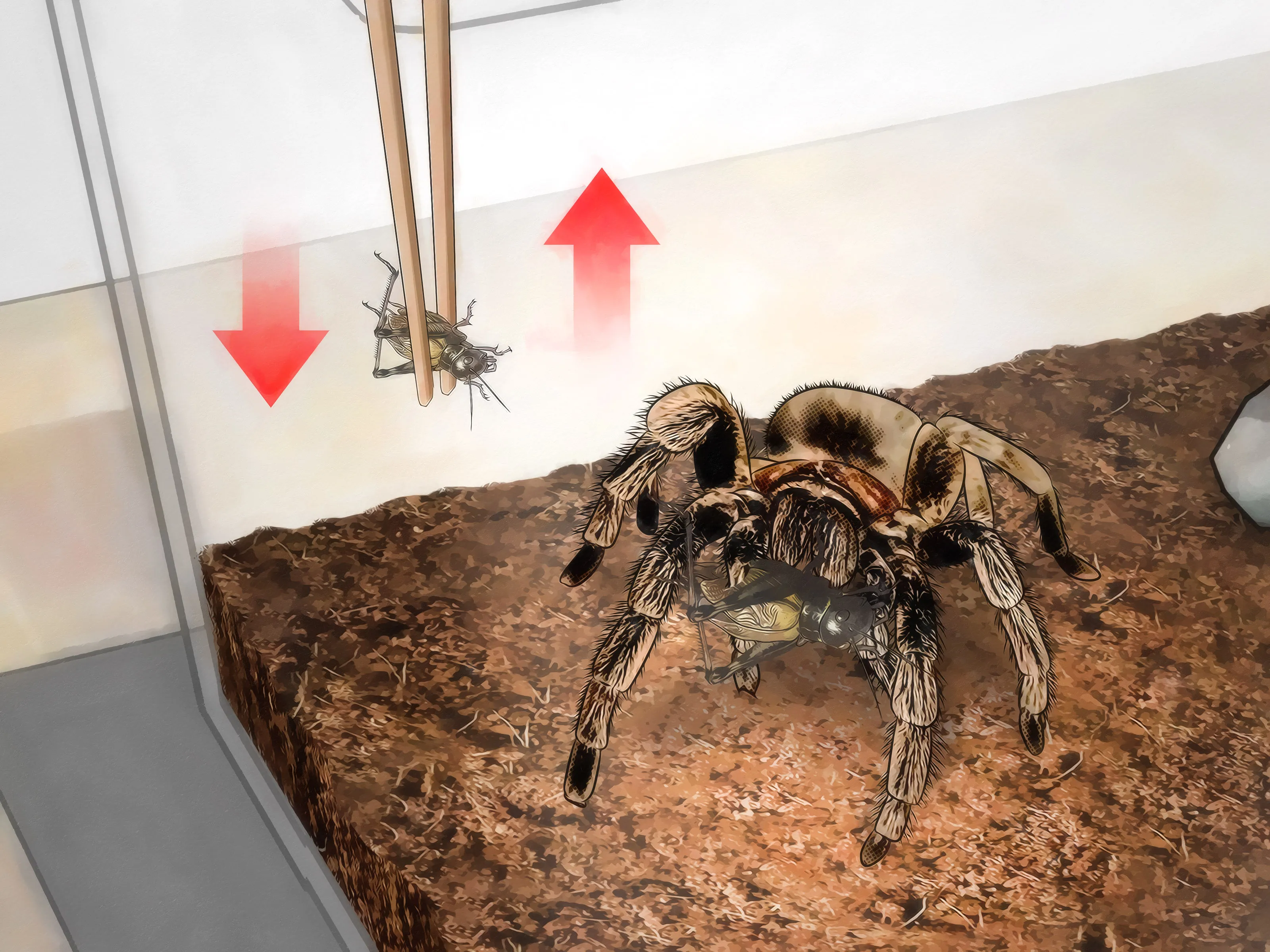
One of the most apparent signs of starvation is lethargy. A tarantula that isn’t eating will often become less active and spend most of its time in its hide. It may move slowly and appear weak. If your tarantula usually explores its enclosure but now remains still, it may be suffering from starvation. A healthy tarantula should display a moderate level of activity. Any changes in behavior should be noted. Observe how it moves around the enclosure. A lack of energy can indicate inadequate nutrition. Lethargy can also be a sign of other health issues, so it is important to consider all possible causes. Monitoring your tarantula’s activity levels is essential for maintaining its health. Taking immediate action is important if the lethargy persists, because it could be a sign of serious health problems.
Shrinking Abdomen
A shrinking abdomen is a telltale sign of starvation in tarantulas. The abdomen, where the tarantula stores food and nutrients, will gradually decrease in size as it depletes its reserves. A healthy tarantula should have a plump abdomen, even after molting. Regularly compare the size of the abdomen over time to identify any changes. This is an easy way to monitor their nutritional status. Make sure to compare the abdomen size from molt to molt. A noticeably shrunken abdomen is a clear indication that the tarantula is not getting enough food or that it’s not absorbing the nutrients it needs. Address the issue promptly by checking your feeding schedule and the type of prey you are offering. Addressing this issue as soon as possible will help you ensure the well-being of your pet.
Loss of Appetite
The most obvious sign of starvation is a complete loss of appetite. If your tarantula refuses to eat, it is a significant cause for concern. Even when offered a variety of prey, a starving tarantula will not show interest. Observe your tarantula closely during feeding times to see if it attempts to hunt or consume its prey. The lack of interest in food can be caused by a variety of issues. It’s essential to rule out other possible causes. Consider external factors like stress, environmental conditions, or health issues. If your tarantula consistently rejects food, you should assess and adjust the care routine. Consulting with a specialist can help you pinpoint and resolve the underlying issues. Monitor your tarantula’s eating habits regularly to ensure they are getting enough nutrition and are in good health.
Visible Skeletal Structure
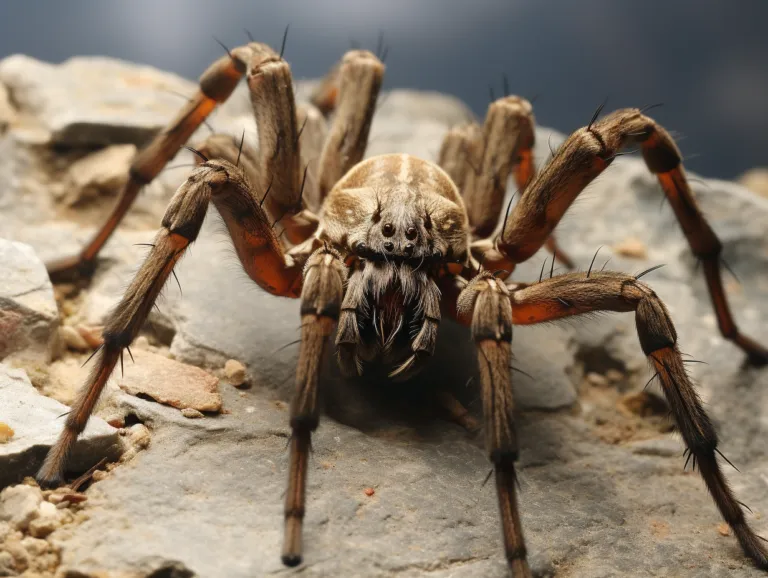
In severe cases of starvation, the tarantula’s skeletal structure may become visible. The exoskeleton may appear thinner and less full, and you may see the outline of the internal organs. This is a critical sign that the tarantula has depleted its fat reserves. This requires immediate attention. A tarantula should have a robust appearance. This appearance should remain consistent throughout its life. If you observe the skeletal structure becoming visible, it is an emergency. Seek veterinary advice immediately. Providing a nutrient-rich diet and creating a favorable environment are crucial to the recovery. Addressing this issue as soon as possible is important to prevent further health complications. Taking the necessary steps can help save your tarantula from starvation.
Tips for Encouraging Your Tarantula to Eat
If your tarantula is not eating, there are several steps you can take to encourage it to feed. Addressing the underlying cause and implementing the appropriate measures will help restore your tarantula’s health. From adjusting the environment to varying the diet, these tips can make a significant difference. Patience is key, and it may take time for the tarantula to return to its normal feeding habits. Always prioritize the tarantula’s health and well-being. These simple adjustments can significantly improve your tarantula’s health. These tips should help you make sure your tarantula gets the nutrition it needs to live a long and healthy life. The key to a successful plan is consistency and attention to the tarantula’s health.
Offering a Variety of Prey
Tarantulas can sometimes become bored with a monotonous diet. Offering a variety of prey can stimulate their appetite. Crickets, mealworms, roaches, and even small pre-killed insects can be introduced. Make sure the prey items are the appropriate size for your tarantula. If the tarantula refuses the food, remove it after 24 hours. Observe the tarantula’s response to different types of prey. A balanced diet can also enhance the nutritional intake, helping your tarantula thrive. Varying the diet provides your pet with essential nutrients. This will stimulate interest and support overall health. Always provide high-quality prey, as this affects your pet’s long-term health.
Adjusting the Feeding Schedule
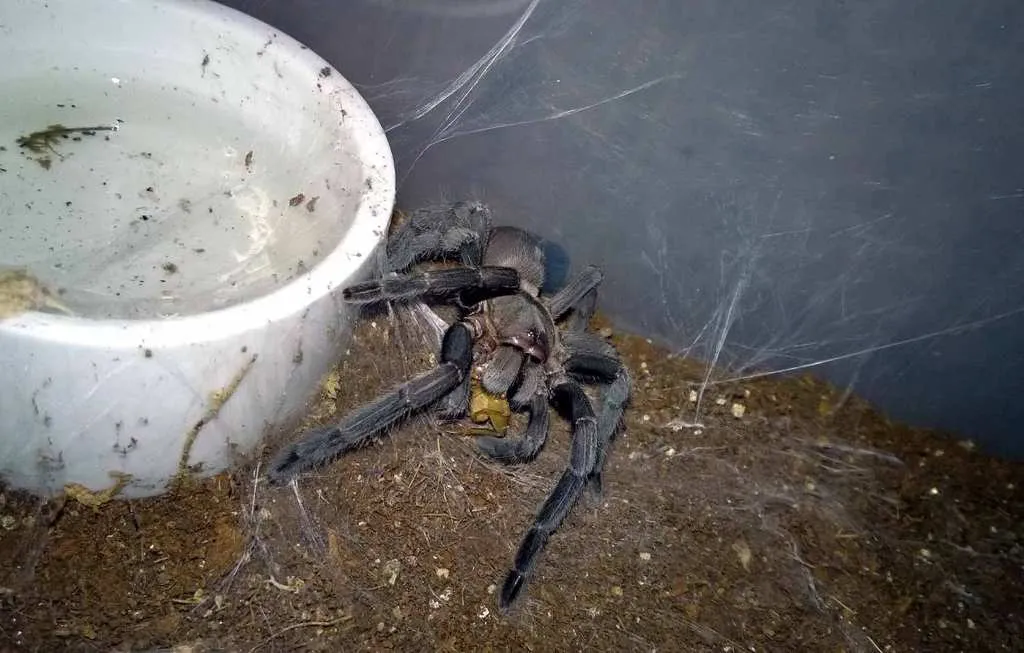
Adjusting the feeding schedule can also help. If your tarantula is a juvenile, you might be feeding it once or twice a week. Reduce the frequency if the tarantula is not eating. For older tarantulas, reduce the feeding to once every two to four weeks. Avoid overfeeding, as it can lead to health issues. Make sure to take into account the species of the tarantula, their age, and the current environment. Adjust the feeding schedule to suit their needs. Observe the tarantula’s response to changes in your routine. Maintaining a consistent feeding schedule is very important. The goal is to find the correct balance that encourages your pet to eat regularly. Keep a close eye on your pet, and always adjust the schedule as needed.
Creating the Ideal Habitat
Ensuring your tarantula’s habitat is optimal can stimulate its appetite. Maintain the correct temperature and humidity levels for the species. Ensure there is adequate ventilation and hiding places. A secure, comfortable habitat reduces stress and encourages feeding. The enclosure should be clean and free of any potential hazards. Making sure the habitat is optimized creates an environment that encourages the tarantula to eat. Regularly check and adjust the conditions. Doing this will help your tarantula feel safe, comfortable, and ready to feed. Providing the best possible environment is a key factor in maintaining your tarantula’s health and well-being. Consider providing your tarantula with everything they need to thrive.
When to Consult a Veterinarian
Knowing when to seek professional help is essential. If your tarantula continues to refuse food for an extended period, or if it shows other signs of illness (lethargy, unusual behavior, etc.), it is time to consult a veterinarian experienced in exotic pets. A veterinarian can perform a thorough examination to identify any underlying health issues. Early intervention can significantly improve the chances of a full recovery. The veterinarian can also offer expert advice on dietary and environmental adjustments. Don’t hesitate to seek professional help if you are concerned. Getting your tarantula assessed by a professional is important to ensuring its health. A timely veterinary visit can make a significant difference in the recovery of your tarantula, so it is essential to seek help as soon as problems arise.
